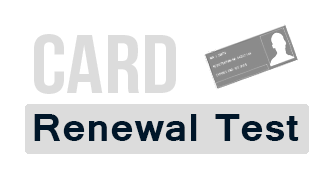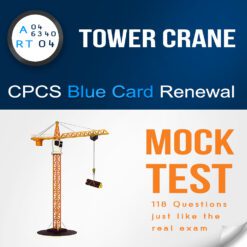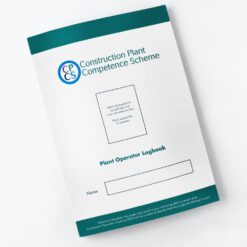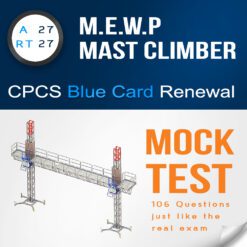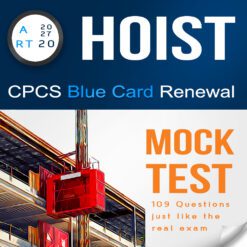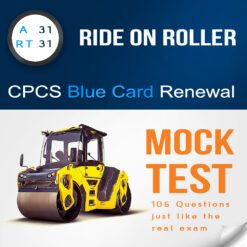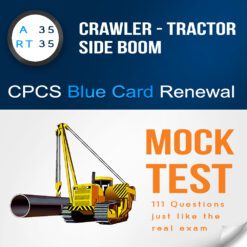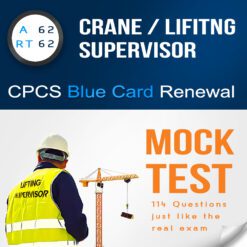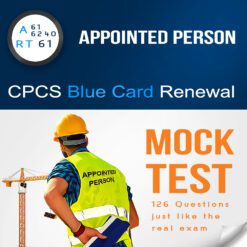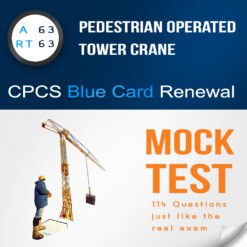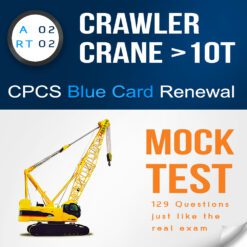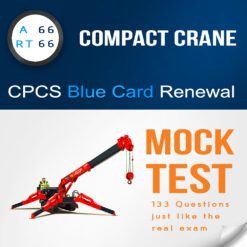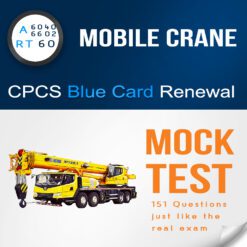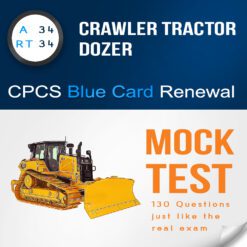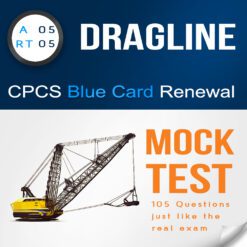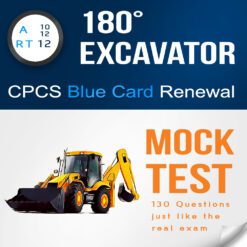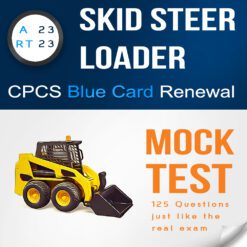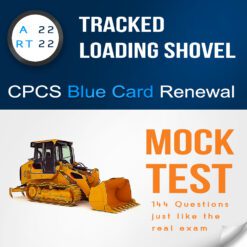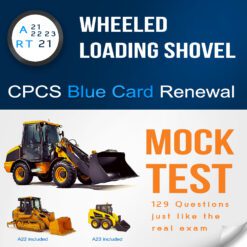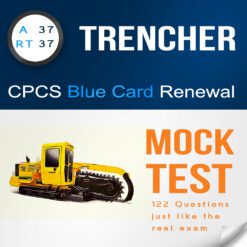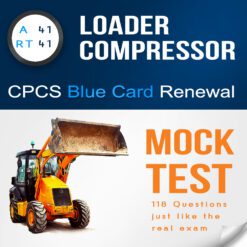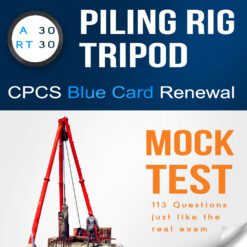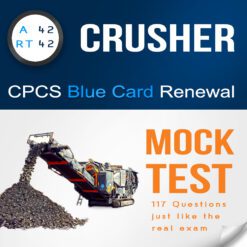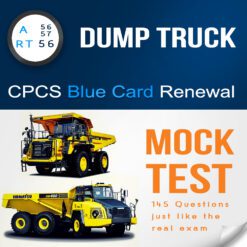- What is the potential consequence if the crane operator fails to take note of the lift plan contents?
- a) Improved efficiency
- b) Smooth operation
- c) Increased safety
- d) Incidents could occur
Correct answer: d) Incidents could occur
- What is the primary emphasis of the lifting guidance regarding suspended loads and workers or pedestrians?
- a) Speeding up the lifting process
- b) Avoiding collisions with other cranes
- c) Prioritizing the safety of workers and pedestrians
- d) Maximizing the load capacity of the crane
Correct answer: c) Prioritizing the safety of workers and pedestrians
- What is the purpose of placing the jib into the out-of-service condition?
- a) To maximize crane performance
- b) To minimize the area presented to the prevailing wind
- c) To comply with regulatory requirements
- d) To facilitate ease of maintenance
Correct answer: b) To minimize the area presented to the prevailing wind
- Who constructs the lift plan for a lifting operation?
- a) Site manager
- b) Crane operator
- c) Competent person
- d) Lift planner/appointed person
Correct answer: d) Lift planner/appointed person
- What determines the minimum distances that must be kept from overhead power lines, according to the guidance?
- a) The crane operator’s preference
- b) The crane manufacturer’s recommendations
- c) The lift supervisor’s instructions
- d) The voltage in the power line
Correct answer: d) The voltage in the power line
- What is the importance of keeping the access ladders in the mast clean and free of obstructions?
- a) To make them visually appealing
- b) To allow easy climbing without hindrance
- c) To provide a storage space for tools
- d) To minimize the need for maintenance
Correct answer: b) To allow easy climbing without hindrance
- What is the suggested method for carrying tools or small items of equipment to the cab or jib area, according to the guidance?
- a) Carrying them in hand
- b) Using a large backpack
- c) Utilizing a small rucksack worn on the chest
- d) Placing them in a toolbox on the crane
Correct answer: c) Utilizing a small rucksack worn on the chest
- Why should the sequence of operations be determined for a lifting operation?
- a) After the lifting operation has already begun
- b) During routine maintenance checks
- c) Before lifting operations begin
- d) Only if there are changes in the weather
Correct answer: c) Before lifting operations begin
- What is the primary function of the crane’s Rated Capacity Indicator (RCI)?
- a) To control the crane’s speed
- b) To provide warnings to the operator about approaching and exceeding maximum rated capacity
- c) To regulate the crane’s fuel consumption
- d) To monitor the operator’s performance
Correct answer: b) To provide warnings to the operator about approaching and exceeding maximum rated capacity
- Why is it important to consider the load’s status in relation to the crane’s rated capacity?
- a) To minimize crane downtime
- b) To increase the crane’s lifting capacity
- c) To expedite lifting operations
- d) To avoid overloading the crane
Correct answer: d) To avoid overloading the crane
- What is the potential consequence if the RCI is overridden during lifting operations?
- a) Improved crane performance
- b) Increased lifting capacity
- c) The crane may over-lift
- d) Enhanced stability of the crane
Correct answer: c) The crane may over-lift
- What should be the procedure if pressure is applied to the operator when working with a number of contractors?
- a) Ignore the pressure and continue operations
- b) Immediately contact the lift planner
- c) Contact the supervisor for further advice and direction
- d) Report the incident only if it leads to downtime
Correct answer: c) Contact the supervisor for further advice and direction
- What is a potential concern with loads having a large surface area, such as shuttering, in high winds?
- a) Increased lifting capacity
- b) Movement and/or swinging that could cause the crane to go out of radius
- c) Improved stability of the crane
- d) Reduction in wind impact
Correct answer: b) Movement and/or swinging that could cause the crane to go out of radius
- How do anti-collision systems work and what are their limitations?
- a) They minimize contact between tower cranes, but do not work with other types of crane or plant
- b) They work only with tower cranes and have no limitations
- c) They prevent all collisions and have no limitations
- d) They are only effective in preventing collisions with structures
Correct answer: a) They minimize contact between tower cranes, but do not work with other types of crane or plant
- What should the procedures be if loads have to be lifted over persons?
- a) No specific procedures needed
- b) Only inform the lift supervisor
- c) Detailed lift plan, including risk assessment and safety measures
- d) Consultation with the crane coordinator only
Correct answer: c) Detailed lift plan, including risk assessment and safety measures


